Sifang Art Museum "gives you a feeling of mystery" says Steven Holl
New York architect Steven Holl has released two movies about the Sifang Art Museum in Nanjing, China, a building designed to recreate the "parallel perspectives" that are characteristic of Chinese landscape paintings.
The first of the two movies depicts a typical day at the museum, which is located at the entrance to an architectural complex within the Laoshan National Forest Park. The second is a guided tour from Steven Holl that explains how he and collaborating Chinese architect Li Hu came up with the design.
According to Holl, the building was designed as a sequence of walls that angle in different directions to confuse a visitor's sense of perspective.
"It gives you a feeling of mystery about the space. It's not really clear what's parallel to what," he says. "This had to be worked out on the site. We had to actually position these walls while standing and manipulating the space on the site, that was the only way it could be done."
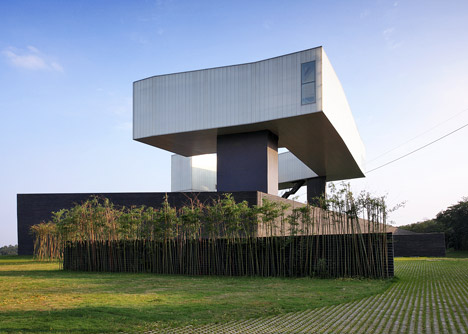
The concept to create "parallel perspectives" around the building was inspired by the Chinese artists who rejected the single-point-perspective approach of Western painters in favour of images that allow the viewer to travel between vistas.
"The first drawings were about the courtyard," says Holl. "You can see the way the landscape is organised in these parallel perspective walls, creating conditions where there's not really the sense of a vanishing point but there's a kind of a sense of warping the space."
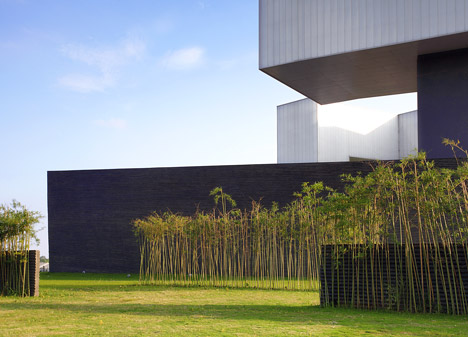
The base of the building is a black concrete volume surrounded by walls imprinted with the texture of bamboo, while the upper section is an illuminated glass tunnel raised up on columns. It is surrounded by a landscape of fields and pools.
"This landscape comes down to an edge, but the edge isn't quite yet the building because there's this edge of bamboo against a freestanding wall which also creates an ante space before you get to the condition of the parallel perspective," says Holl.
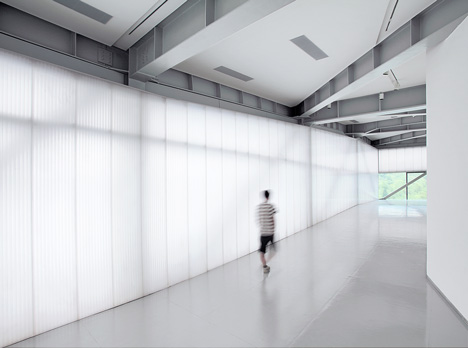
Galleries are located on all three floors of the building, creating places for displaying contemporary art and sculpture. "The condition of space isn't exactly box-like, but it is more or less orthogonal and that gives a good background for the art," added the architect.
Movies were produced by Spirit of Space. Photography is by Xia Zhi.
Here's some extra information from Steven Holl Architects:
Steven Holl Architects presents two films on the Sifang Art Museum
Steven Holl Architects in collaboration with Spirit of Space has created two short films on the Sifang Art Museum, which opened in November 2013 in Nanjing, China.
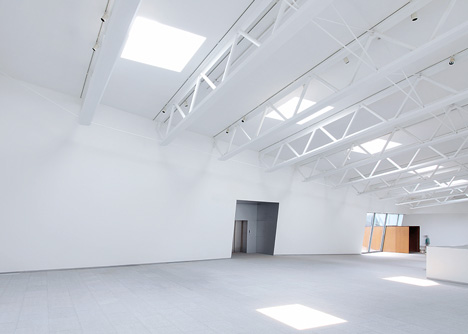
The film series explores the changing perspectives as visitors move through the new Sifang Art Museum, from the lush green landscape of the Pearl Spring near Nanjing, through the Museum’s entry court and lower gallery, to its floating upper gallery. The film, A Conversation with Steven Holl, presents Steven Holl on site, as he explains the design concept for the new building.
Designed by Steven Holl with Li Hu, the Sifang Art Museum explores the shifting viewpoints, layers of space, and expanses of mist and water, which characterise the deep alternating spatial mysteries of the composition of Chinese painting. The museum is formed by a "field" of parallel perspective spaces and garden walls in black bamboo-formed concrete over which a light "figure" hovers. The straight passages on the ground level gradually turn into the winding passage of the gallery above. Suspended high in the air, the upper gallery unwraps in a clockwise turning sequence and culminates at "in-position" viewing of the city of Nanjing in the distance. This visual axis creates a link back to the great Ming Dynasty capital city.
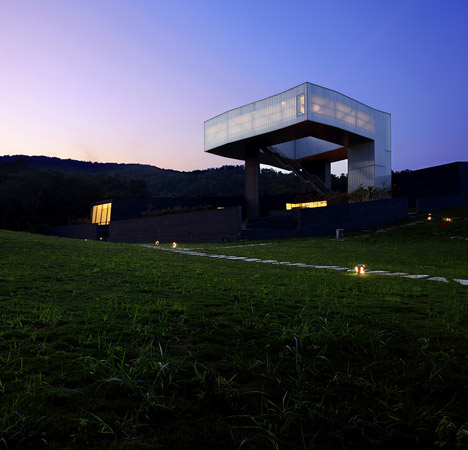
The courtyard is paved in recycled Old Hutong bricks from the destroyed courtyards in the centre of Nanjing. Limiting the colours of the museum to black and white connects it to ancient Chinese paintings, but also gives a background to feature the colours and textures of the artwork and architecture exhibited within. Bamboo, previously growing on the site, has been used in bamboo-formed concrete, with a black penetrating stain. The museum is heated and cooled by geothermal wells, and features a storm water recycling system.